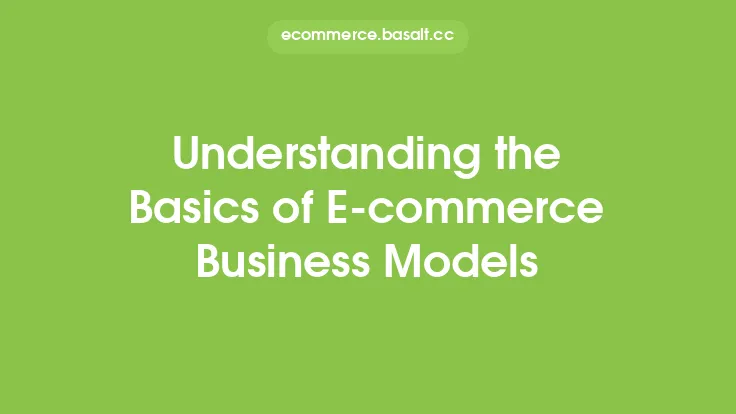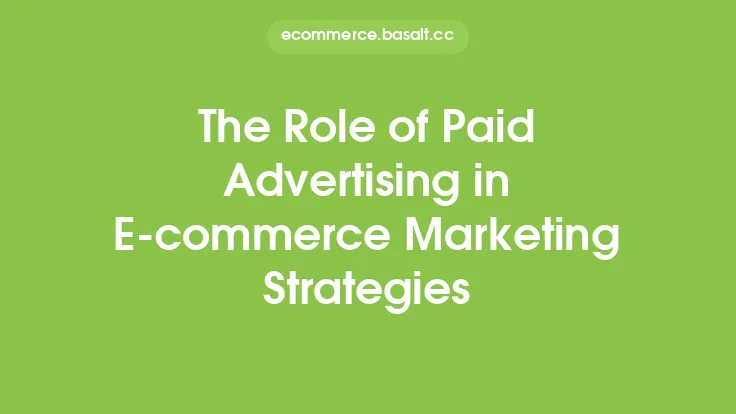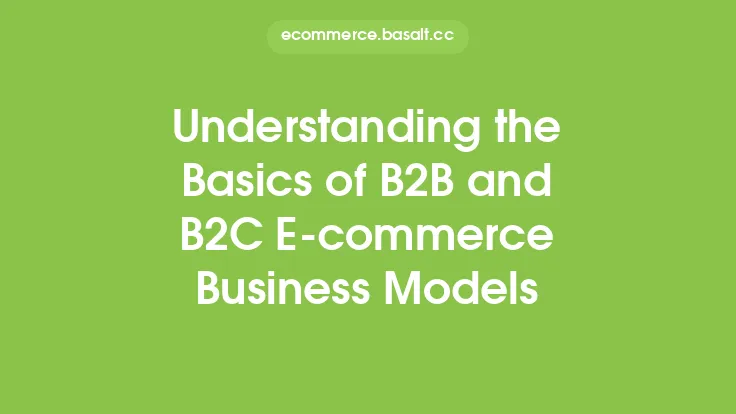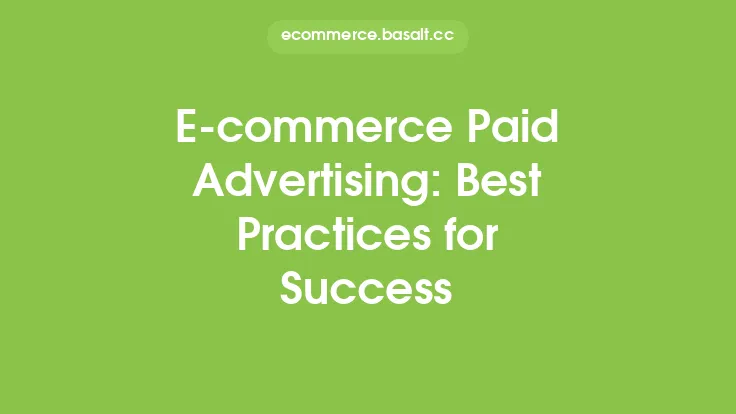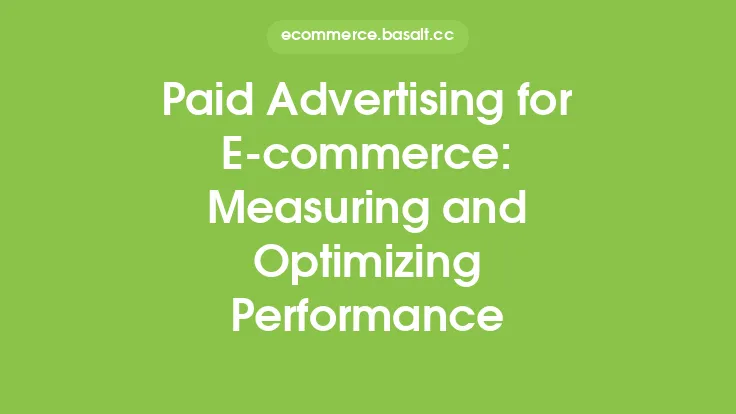Paid advertising is a crucial component of e-commerce marketing, allowing online businesses to reach a vast audience, drive traffic, and increase sales. In the world of e-commerce, paid advertising refers to the process of creating and displaying sponsored content on various platforms, such as search engines, social media, and websites, to promote products or services. To effectively utilize paid advertising for e-commerce, it's essential to understand the basics, including the different types of paid advertising, how they work, and the key elements involved.
Types of Paid Advertising
There are several types of paid advertising that e-commerce businesses can use to reach their target audience. These include:
- Search Engine Marketing (SEM): This type of advertising involves creating ads that appear on search engine results pages (SERPs) when users search for specific keywords. SEM ads are typically text-based and are displayed above or below organic search results.
- Social Media Advertising: This type of advertising involves creating ads that appear on social media platforms, such as Facebook, Instagram, and LinkedIn. Social media ads can be image-based, video-based, or text-based, and can be targeted to specific audiences based on demographics, interests, and behaviors.
- Display Advertising: This type of advertising involves creating ads that appear on websites, mobile apps, and other online platforms. Display ads can be image-based, video-based, or text-based, and can be targeted to specific audiences based on demographics, interests, and behaviors.
- Native Advertising: This type of advertising involves creating ads that match the form and function of the platform they appear on. Native ads can be displayed on social media platforms, websites, and mobile apps, and are designed to blend in with the surrounding content.
- Video Advertising: This type of advertising involves creating video-based ads that appear on websites, social media platforms, and mobile apps. Video ads can be targeted to specific audiences based on demographics, interests, and behaviors, and can be used to promote products, services, and brand awareness.
How Paid Advertising Works
Paid advertising works by allowing businesses to create and display sponsored content on various platforms, with the goal of driving traffic, generating leads, and increasing sales. The process typically involves the following steps:
- Ad Creation: Businesses create ads that include text, images, videos, or other media, along with a target URL and other relevant information.
- Ad Targeting: Businesses select the target audience for their ads, based on demographics, interests, behaviors, and other factors.
- Ad Bidding: Businesses bid on ad space, with the highest bidder winning the ad auction and having their ad displayed.
- Ad Display: The winning ad is displayed on the selected platform, such as a search engine results page or social media feed.
- Ad Measurement: The performance of the ad is measured, including metrics such as click-through rate, conversion rate, and return on ad spend.
Key Elements of Paid Advertising
There are several key elements involved in paid advertising, including:
- Ad Copy: The text, images, and other media used in an ad to promote a product or service.
- Targeting Options: The various options available for targeting ads to specific audiences, such as demographics, interests, and behaviors.
- Bidding Strategies: The different strategies used to bid on ad space, such as cost-per-click (CPC) and cost-per-thousand impressions (CPM).
- Ad Extensions: Additional features that can be added to ads, such as site links, callouts, and call extensions.
- Landing Pages: The web pages that users are directed to after clicking on an ad, which should be optimized for conversions and user experience.
Benefits of Paid Advertising
Paid advertising offers several benefits for e-commerce businesses, including:
- Increased Brand Awareness: Paid advertising can help increase brand awareness and reach a wider audience.
- Targeted Reach: Paid advertising allows businesses to target specific audiences based on demographics, interests, and behaviors.
- Measurable Results: Paid advertising provides measurable results, including metrics such as click-through rate, conversion rate, and return on ad spend.
- Flexibility: Paid advertising offers flexibility in terms of ad format, targeting options, and bidding strategies.
- Scalability: Paid advertising can be scaled up or down depending on budget and performance.
Common Paid Advertising Platforms
There are several common paid advertising platforms used by e-commerce businesses, including:
- Google Ads: A popular platform for search engine marketing and display advertising.
- Facebook Ads: A popular platform for social media advertising and targeting specific audiences.
- Instagram Ads: A popular platform for social media advertising and targeting specific audiences.
- LinkedIn Ads: A popular platform for B2B advertising and targeting specific audiences.
- Amazon Advertising: A popular platform for e-commerce advertising and targeting specific audiences on Amazon.
Best Practices for Paid Advertising
To get the most out of paid advertising, e-commerce businesses should follow best practices such as:
- Conducting thorough keyword research and targeting options.
- Creating high-quality ad copy and landing pages.
- Setting clear bidding strategies and budgets.
- Monitoring and optimizing ad performance regularly.
- Using ad extensions and other features to enhance ad visibility and performance.
- Ensuring a seamless user experience across devices and platforms.
Conclusion
Paid advertising is a powerful tool for e-commerce businesses, offering a range of benefits and opportunities for growth. By understanding the basics of paid advertising, including the different types, how they work, and the key elements involved, businesses can create effective paid advertising campaigns that drive traffic, generate leads, and increase sales. Whether you're a seasoned marketer or just starting out, paid advertising can help take your e-commerce business to the next level.
